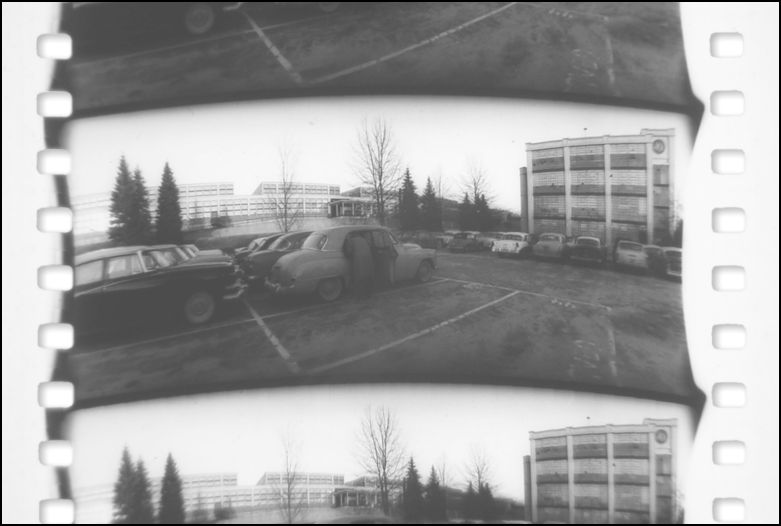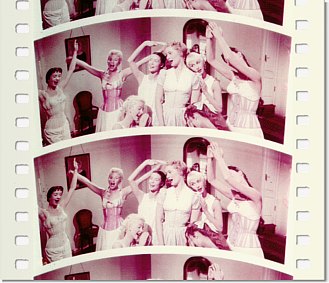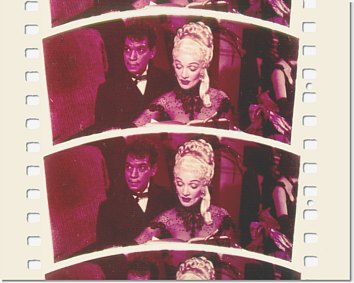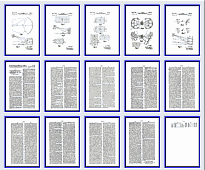|
|
|
|
|
|
|
|
|
|
|
|
70mm Film Finally Makes The Big Time
Todd-AO featured a deeply curved screen
and stereophonic sound quite similar to Cinerama, which had inspired it.
In order to make it possible to install Todd-AO with far less architectural
modification than Cinerama required, a series of specially rectified prints
were possible which allowed for projection from the theatre's normally high
projection booth without the expected distortions.
Illustration 1, at left, shows what the image would look like from the center
of the theatre if a normal print was projected onto the curved screen by
a projector located significantly higher than the screen centerline. Cinerama
required that all three booths be located in direct line with the curved
screen.
Illustration 2 shows the type of rectification that could be made when producing
the prints. Whether or not the optics required for the rectification process yielded an image quality on a par with an unrectified print is unknown. Illustration 3 shows how the rectified print would appear, (hopefully) without
distortion

Sample of 65mm footage shot at the American Optical facility in Massachusetts. The film was a test of the new optical printer that rectified the image for curved screen projection from a high booth. The curvature in this print is less than those shown below. There was provision for several different settings to accommodate the requirements of different theatres.Photo courtesy of Thomas Hauerslev
 |  |
and Around the World in 80 Days (70mm) Courtesy of Thomas Hauerslev (see our Links Page for Thomas' 70mm web sites) | |

This is from a rectified 70mm print of Oklahoma!with magnetic stripes.
Filing projector aperture plates must have been very, very tricky.
Film Courtesy of Matt Lutthans

Richard Rodgers and Oscar Hammerstein II, the ingredients felt necessary to help Todd-AO gain acceptance and provide a sure fire hit for the premiere production. Ultimately the process would be used predominantly for high budget musicals, with Rodgers & Hammerstein being responsible for three of them.
















E-mail the author
CLICK HERE
©1996 - 2004 The American WideScreen Museum
http://www.widescreenmuseum.com
Martin Hart, Curator